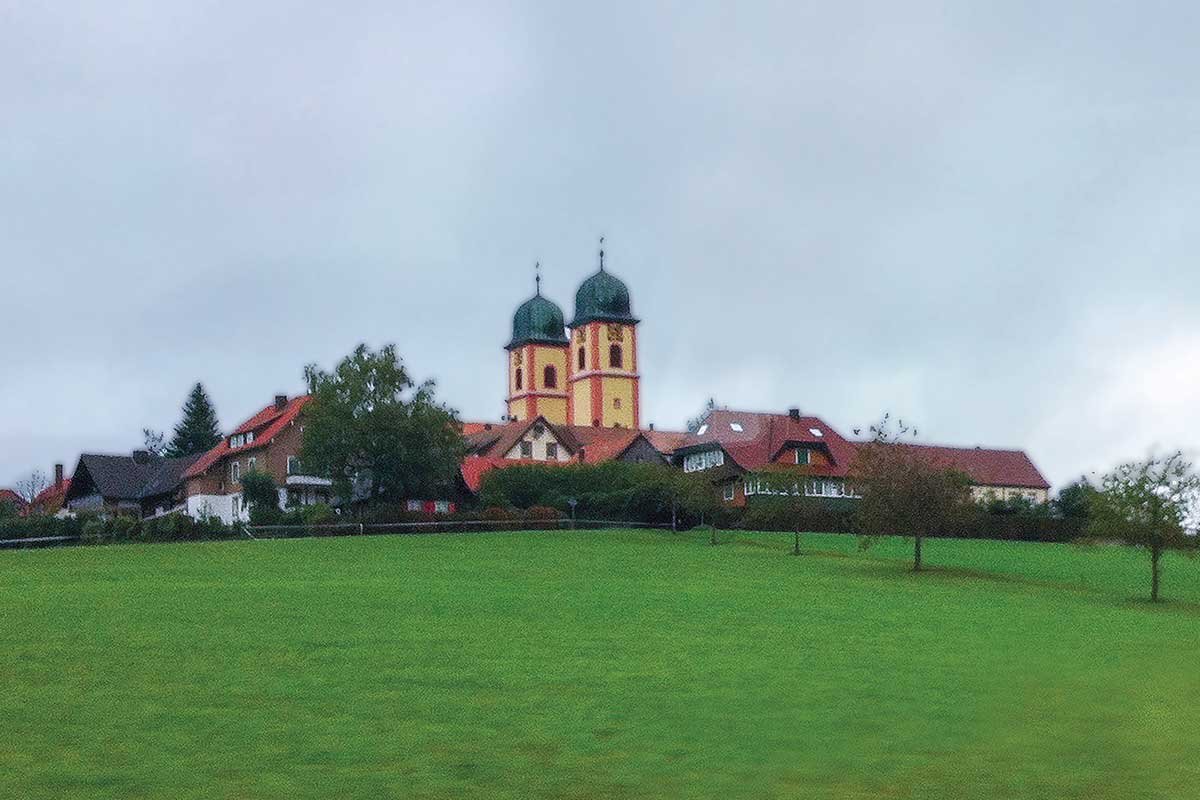
This article was originally published in the 2020 March/April edition of The National Watch & Clock Bulletin.
Following this trend, the 2019 NAWCC Ward Francillon Time Symposium, “Time Made in Germany,” was held at the Germanishces National Museum, Nurnberg, Germany. From September 12 to 15, 200 attendees enjoyed lectures from 13 experts who explored 700 years of the horological achievements of Germany. It was also bookended by two 30-person special English-language tours. The first of these “rolling symposiums” explored the clock and watch making regions of the Black Forest. The second tour visited significant horological sites of Bavaria. Like the symposium, the purpose of these tours was to educate a small group of American attendees on the horological contributions of the German-speaking regions of Europe. The tours were coordinated by Bob Frishman, NAWCC Symposium Chair, and Fortunat Mueller-Maerki, Initiator of the Nurnberg Symposium. The tour guides were German clock experts Karl Zech, Michael Kopp, and Kurt Strehlow.
It’s fair to say that, if you ask the majority of the people in the world where the best clocks were made, many would answer in the Black Forest of Germany. Certainly, the Black Forest captured the imagination of the world with their inexpensive and beautifully hand-decorated clocks. Young men, risking life and limb, left their sleepy mountain villages to travel the world in hopes of finding their fortunes. Their efforts brought fame to a region that was considered a backwater compared to the powerful and culturally significant cities of their countrymen.
Although my background as an NAWCC employee may suggest I knew all of this, sadly I did not. Despite my interest in German culture and my job at the world’s largest horological museum, research, and educational institution, I was humbled. Classrooms, books, and stories cannot substitute for first-hand experience―something I certainly received during our 200-mile Teutonic journey through the horological hinterlands of the Black Forest.
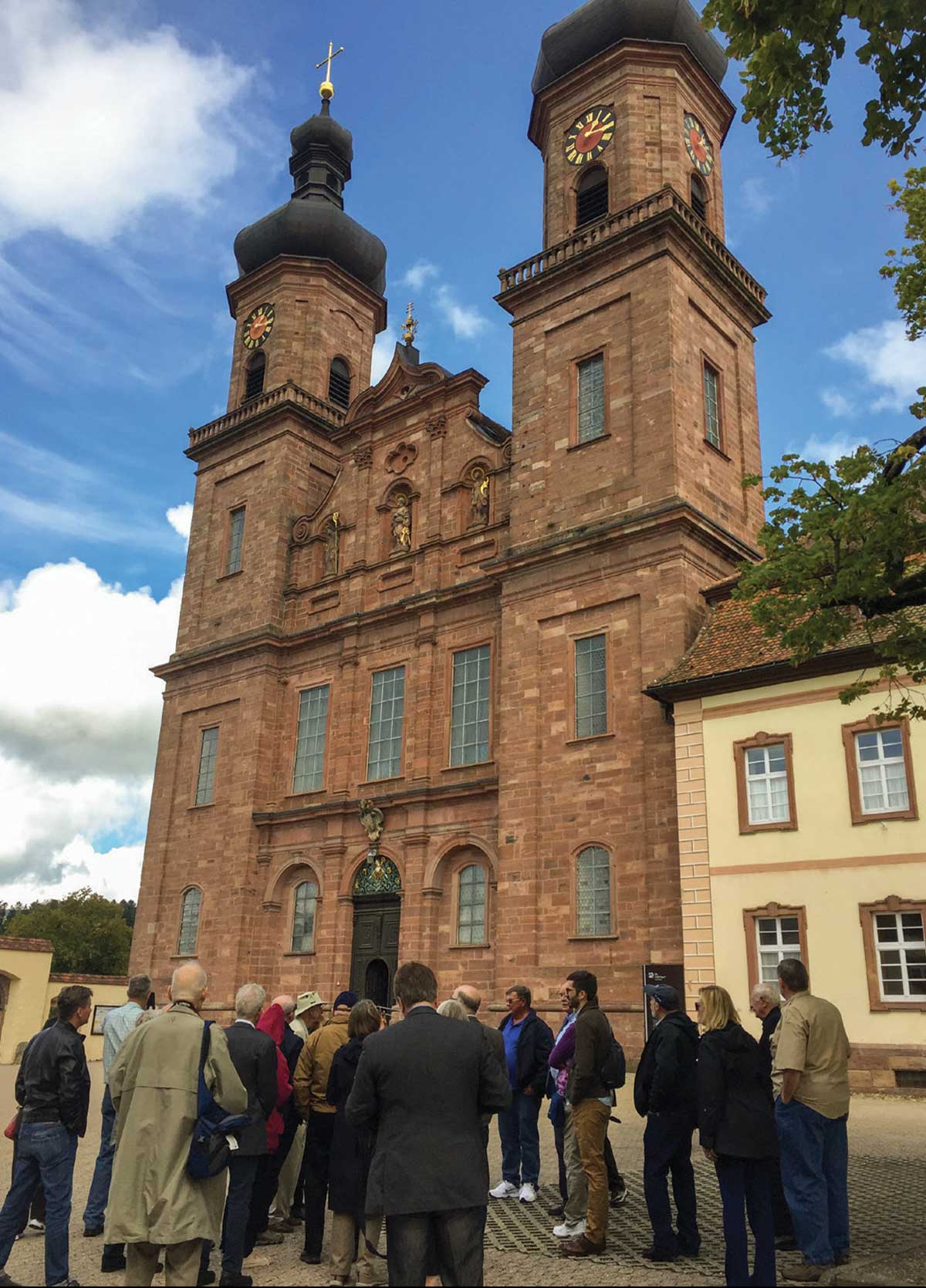
Next, we visited the monastery’s museum containing an impressive collection of Black Forest clocks and historical regional crafts. One of the many highlights of the museum was an exhibit dedicated to the personal and professional effects of successful traveling Black Forest salesman Andreas Löffler who died at a young age while working in England. Many of his personal letters and business records are preserved at the museum.
Another personality of note at the monastery is the 18th-century resident artist and sculptor Matthias Faller. Faller was not clergy but devoted his life to the creation of many beautiful religious sculptures. His remains are buried on the monastery grounds.
A curious contradiction to the Black Forest cuckoo clock trade was impressed upon us by our tour guide. Cuckoos did not live in the Black Forest due to its high altitude. Even today it is still a mystery why cuckoo clocks originated there.
Before leaving St. Märgan we stopped at the Café Goldene Krone to enjoy coffee, tea, and a slice or two of traditional Black Forest cake. Next, we visited the monastery of St. Peter, established in 1093. Aptly named for its frescos depicting the life of Peter the Apostle, the baroque-style monastery is known for its impressive architecture. It is also noted for its school where the monks educated the local population in necessary skills, including clock-making. Like St. Märgan, the monastery has two tower clocks. Inside, there is also an ornate clock facing the pulpit.
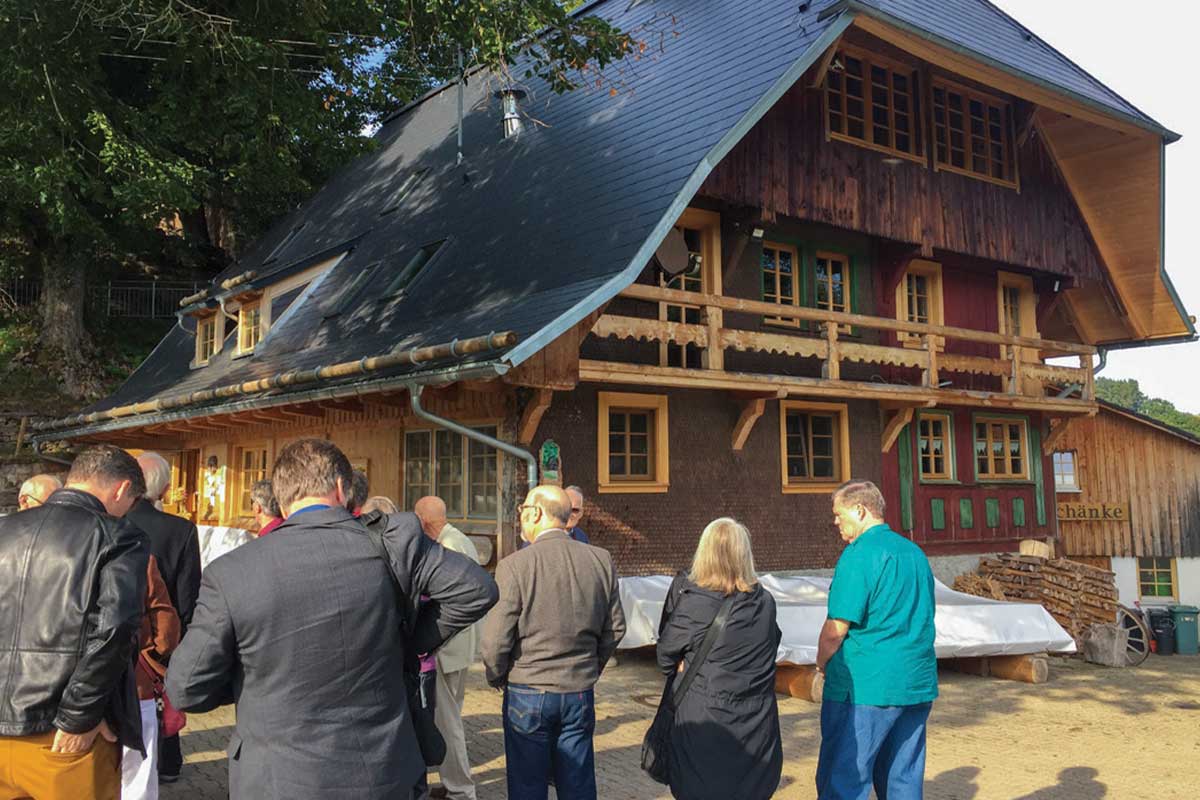
Our final visit of the day was to the comprehensive Deutsches Uhrenmuseum in Furtwangen. There we were greeted by Museum Director Eduard Saluz and Staff Historian Dr. Johannes Graf. They led us on a detailed tour of the museum. Their collection largely celebrates Black Forest clock-making as it evolved from a cottage industry to mass production, but other timepieces from all places of the world and time periods are represented as well.
The museum also includes an impressive gallery of mechanical musical instruments, demonstrated by Saluz, and a monumental clock, much like the Engle Clock gracing the Watch & Clock Museum in the United States. There was also a special exhibit that took artwork on the dials of the Black Forest clocks and enlarged them into wall-size murals and displays. It was as if you were like Alice, falling into the idealized wonderland of the Black Forest, instead of into Victorian England.
We departed for Hotel Ochsen at Schönwald, which was our luxury stay for the following three nights. There we enjoyed a four-course dinner with drinks and retired for the evening.
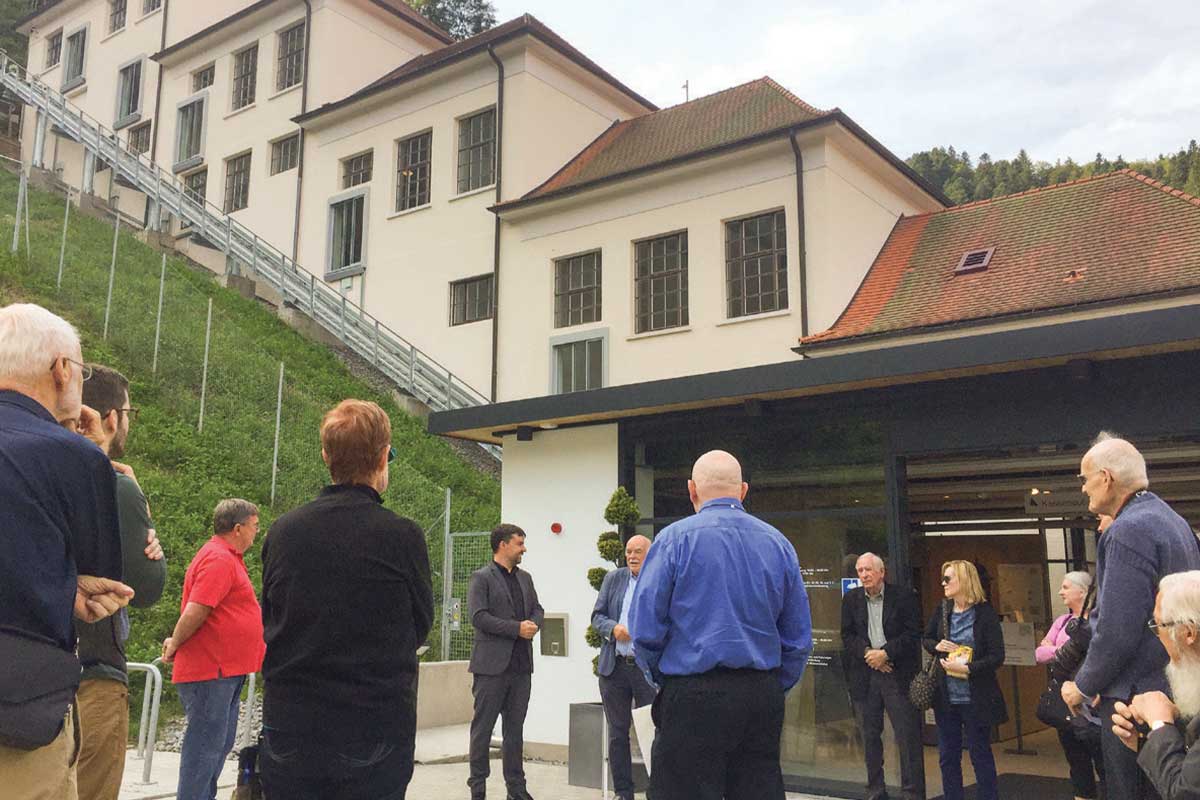
Next we traveled a short distance north to the Junghans Terrassenbau Museum in Schramberg. The Terrassenbau, built on a steep forested hillside, is an architecturally and historically significant landmark in the region. Junghans was once the largest clock manufacturer in the world with more than 6,000 employees. The Junghans brand still exists today but no longer commands the production and employee numbers of its golden age. The building was recently repurposed to form several floors of exhibits.
After a guided tour through the brand museum and watch-making area of the factory, we were free to explore the other collections found in the Terrassenbau. This included a gallery of watch- and clock-making tools and machines as well as an impressive collection of Black Forest clocks.
At the end of the day we dined at Waldau Schänke, a quaint family-run restaurant that sits in the shadow of a long-abandoned medieval tower. There, we enjoyed authentic home-style German cuisine. Before dinner, however, as the sun retreated behind the endless rows of towering pines, we climbed to the top of the ruins to enjoy a beautiful bird’s-eye view of the countryside.
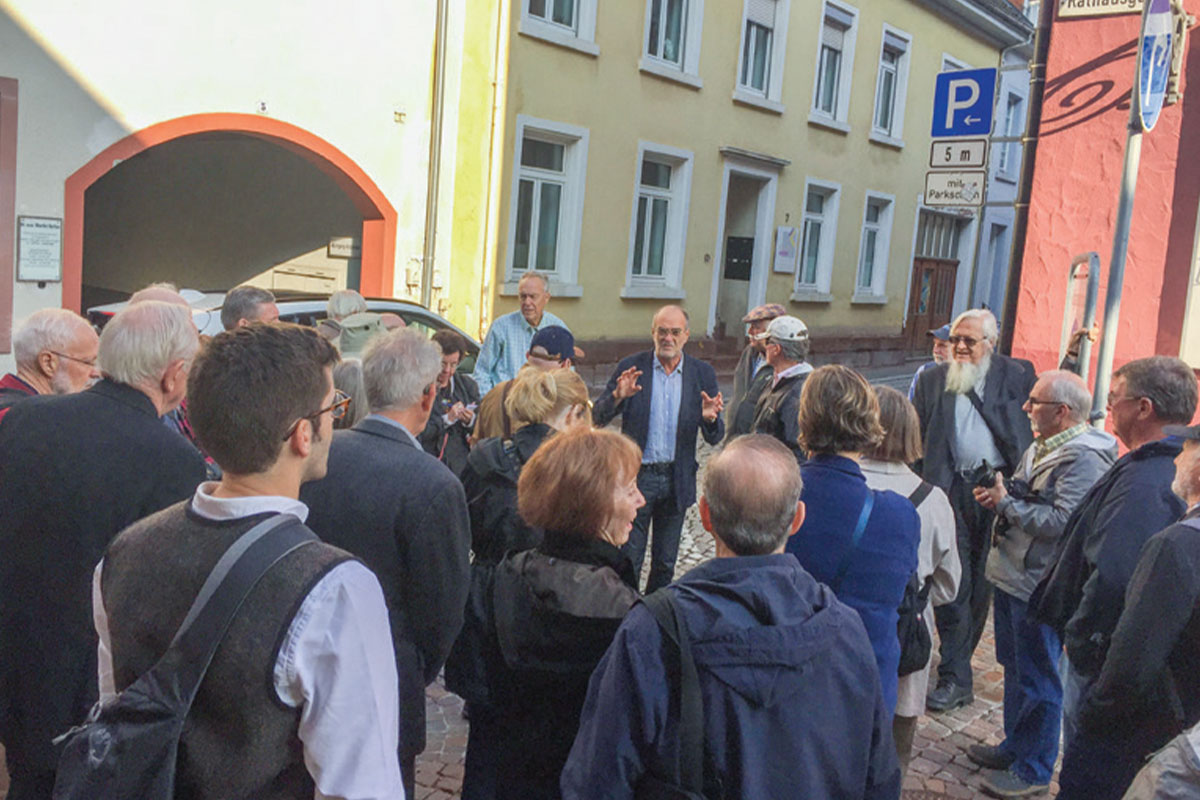
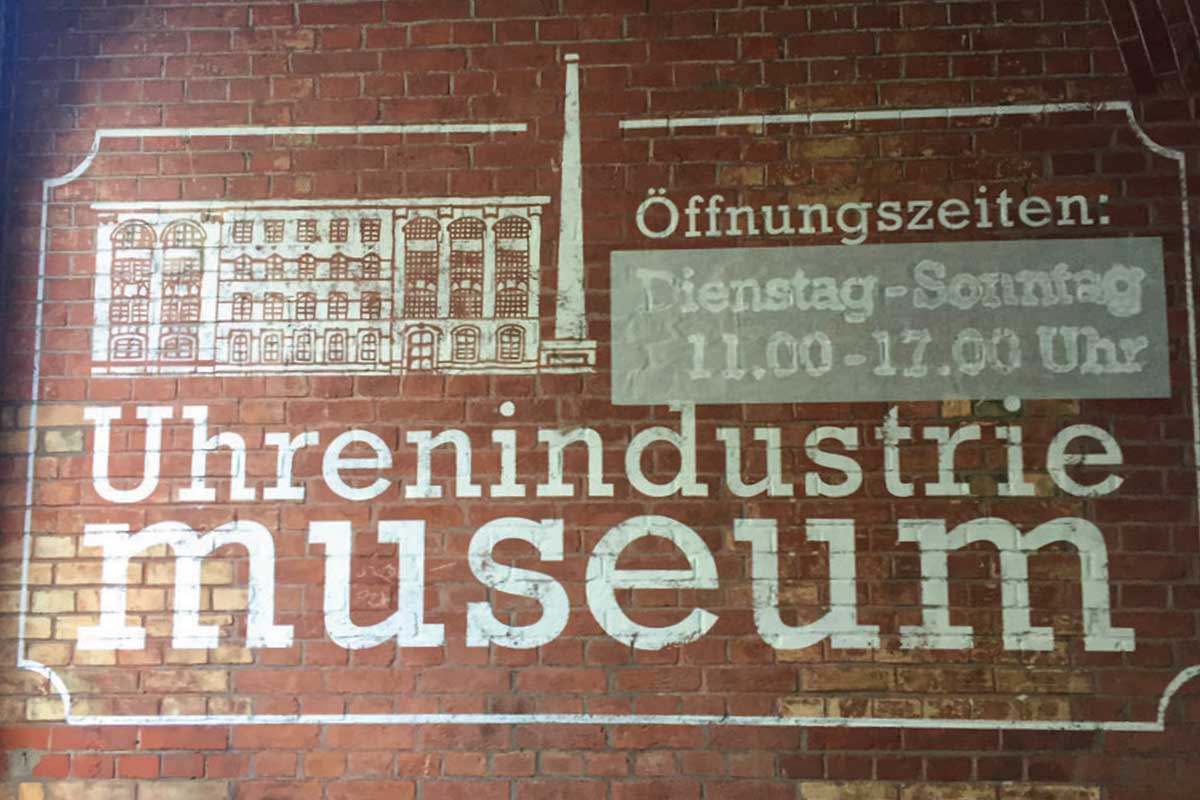
After the tour, we visited the Franziskaner Museum where a wonderful collection of Black Forest clocks and artifacts was on exhibit. The collection was the passion of a watch manufacturer named Oskar Spiegelhalder who dedicated his life to collecting and preserving artifacts of the Black Forest. Of the many Black Forest clock exhibits that we had seen thus far the Spiegelhalder was one of the best. I especially found the collection of painting templates and stencils impressive as they were used to instruct novice artists on how to efficiently create the artwork that helped make the clocks so popular.
After lunch, we traveled to Villingen’s sister city, Schwenningen, which has a long history of clock- and watch-making dating back to its cottage-industry origins. Many of the city’s inhabitants were farmers who also worked as mechanics, fabricating parts in their homes and supporting the local clock trade. By 1928, the city became the world’s most prolific exporter of mechanical alarm clocks, producing 10 million units a year.
There we visited the Museum of Industrial Production of Clocks. The museum celebrates its horological history with many artifacts from the local clock manufacturers. These artifacts include working machinery that was demonstrated for our group. In fact, using these very machines, the museum manufactures its own alarm clocks that can be purchased at its gift shop.
We ended our day in Schwenningen by visiting the home of Michael Kopp, who helped guide us through our Black Forest tour. He has many wonderful clocks and horological ephemera. He and his wife welcomed us into their home to enjoy refreshments and view his collection. This was the first of two private tours that we took. I found these private tours, despite the grandeur of worldrenown museums, the most satisfying. We returned to our hotel that night for a dinner before heading off the next morning to attend the 2019 Ward Francilllon Time Symposium in Nuremberg.
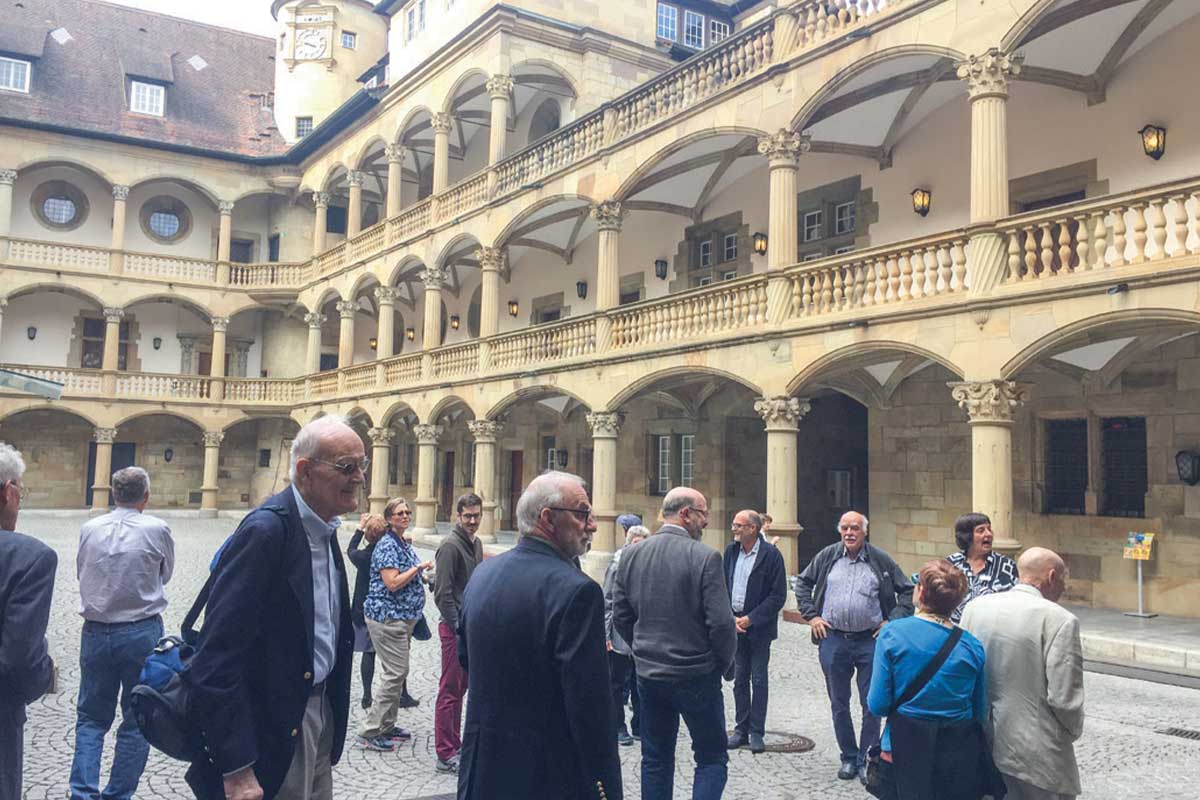
Before arriving at our destination in Nuremberg, we made a stop halfway at Stuttgart, the capitol city of the German state of Baden-Württemberg. There we visited the famous Market Hall and Landesmuseum, or as what our tour guide, Karl Zech, described as the, “body and soul” of the city. The Market Hall is recognized for its Art Nouveau architecture, and is a popular shopping destination. The Landesmuseum is a castle located directly across the street from the Market Hall. The estate, also known as the “Old Castle,” was once the home of royalty but was converted into a museum in the 19th century.
The museum’s collection hosts a wide range of subjects from costumes and textiles to musical instruments. Our tour naturally focused on horology and was specific to their timepiece and scientific instrument collections. First, we were invited for a behind-the-scenes look at their incredible collection of rare pocket watches being prepared for a future exhibit. Many of the pieces dated from the 16th century and were in immaculate condition. To further enhance the experience, the use of an electronic magnifier was made available to better appreciate the exquisite detail and craftsmanship of the pieces
We were then led by curator Dr. Irmgard Müsch into the lower reaches of the castle to witness a collection of timepieces and scientific instruments that represented some of the highest scientific, horological, and artistic achievements of the 15th and 16th centuries. A feast of ivory and ornately decorated polyhedron sundials, gilded automatons, and Orpheus, table, and travel clocks with astronomical, calendrical, and striking mechanisms were found there. After witnessing this collection I now truly understand and appreciate the definition of haute horology.